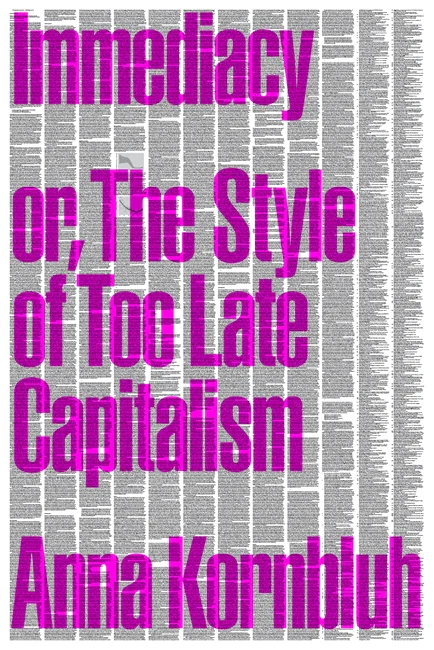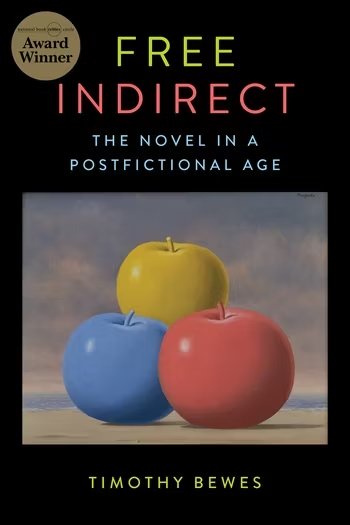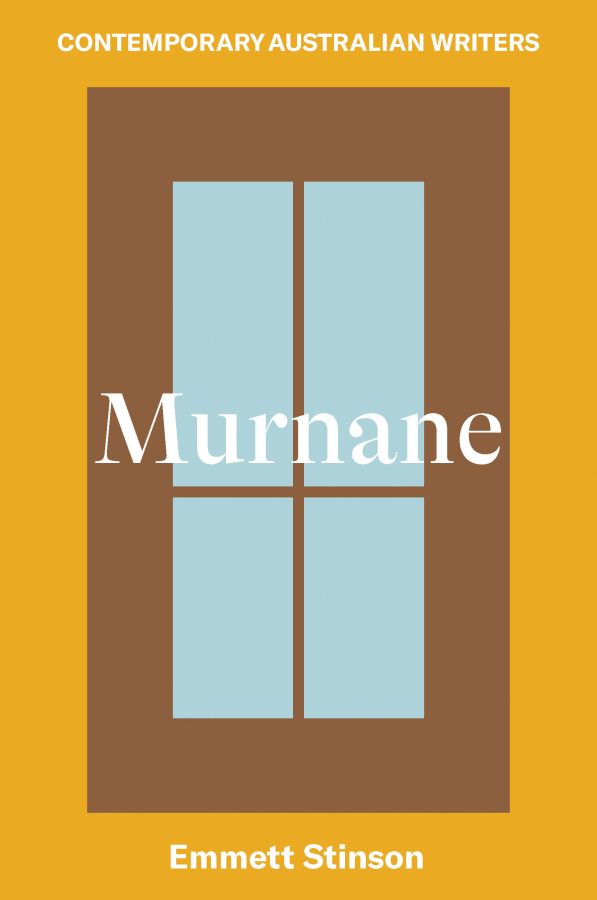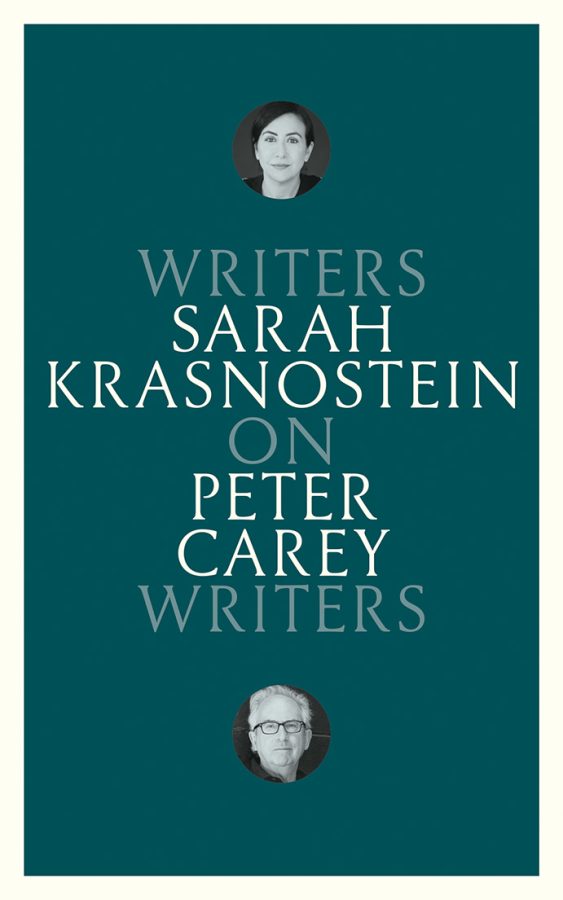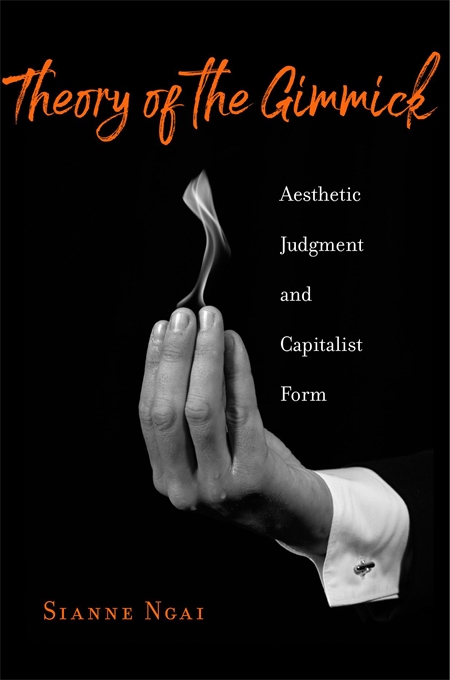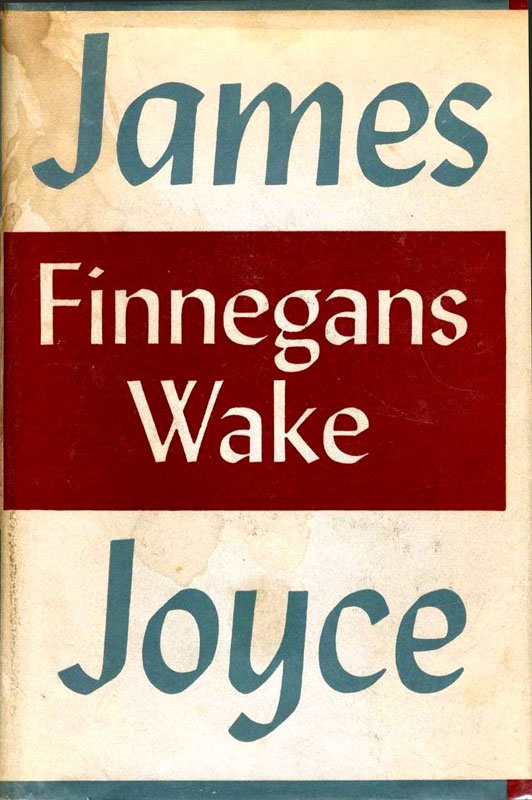Summer Spleening
Signing off for the holidays at the State Library of New South Wales, Critic Watch stopped by the library’s charming little bookstore to pick up the year-ending and summer editions of the literary magazines for holiday reading. On the shelf were Meanjin, Australian Book Review, Griffith Review and Overland; even the scene’s new ‘little guy’, Kill Your Darlings, was there. This was probably to be expected: each receives state subsidy – the established titles through triennial grants as ‘key organisations’ determined by the Literature Board of the Australia Council – and this is the State Library. Making my way to the counter, the pile started to totter to the left, and I realised I was missing something: Keith Windschuttle’s Quadrant, another periodical that receives subsidy for its literary content through the Literature Board. I went back to the shelves but couldn’t see it. Must be sold out. I checked with the saleswoman: ‘sorry, we don’t stock that title’. Really? I thought I’d seen it there before. ‘No I don’t think we’ve ever stocked it.’
On the way home, I stopped by my local newsagent and was lucky to pick up the last copy. This seemed more appropriate: a cultural magazine that can hold its own in the jungle of the open market. Flipping to Windschuttle’s editorial I was surprised to find a diatribe against the Literature Board for cutting Quadrant’s subsidy from $40 000 to $20 000. Why would he care? Shouldn’t this be a badge of honour for a magazine committed to combatting state cronyism?
Perhaps he was turning back the clock. In his 1984 book The Media: A New Analysis of the Press, Television, Radio and Advertising in Australia, Windschuttle had spoken of the need to reject the ‘dominant position of the political Right which maintains that the media … are simply in the business of satisfying audience demands for news and entertainment, and that market forces have produced media that give people what they want.’ In the section on ‘Hegemony’, the young sociology lecturer uncloaks the bourgeois state apparatus in fine Gramscian style: ‘the truth is that the whole capitalist system in Australia is propped up by the state’: ‘Loss-making activities have been socialised … those of us who pay our taxes … make up the losses while the private sector operates the profit-making parts’ (368-69).
Here is Windschuttle in 2013:
current generations have an obligation to the future to nurture and preserve great art forms that have stood the test of time, whether they are commercially viable or not. Poetry, on which most of the literature grants to Quadrant have long been spent, is one such art. To thrive, it needs the support of patrons. In Australia, where private patrons are thin on the ground, the democratic state is an acceptable source, provided no strings are attached.
Before congratulating him for ideological consistency, we should note that Windschuttle Junior mocks at the Leavisite snobs who insist that an ‘intellectual elite of literary critics’ ought to ‘preserve the traditions of Dante, Shakespeare and Donne’, disparaging the absurdity of school children being expected to ‘regurgitate the values of Leavis’s “great tradition” before curling up in front of the TV’ (152-53).
In any case, Windschuttle Senior does not believe that culture should be shaped only by demand in the market place. Noting that the Literature Board is chaired by Sophie Cunningham, former editor of Meanjin, he claims that Meanjin has less literary content per issue in fewer annual editions, and that it and other ‘key organisations’ – Overland and Griffith Review – have smaller circulations. Turning to the Australian Book Review, he claims that it does not live up to the brief he suggests it uses to justify its $110 000 annual grant: reviewing all Australian-published trade books in literature. He selects as an example the ABR overlooking all titles released by Quadrant Books. In its February editorial, ABR points out that in the last two years it has reviewed two titles from that publisher.
But we shouldn’t be distracted by factual quibbles, for a larger point is being made. These periodicals are ‘leftist’, and this is not even ‘just a problem invented by Julia Gillard’s government and her brand of radical feminist socialism’. Windschuttle proposes a review of ‘the entire approach to the allocation of state funding’.
Many in the literary community will have had déjà vu. In December 2009, Windschuttle used similar examples and language when Quadrant’s subsidy was reduced from $50 000 to $35 000. Guy Rundle pointed out in Crikey that this had been its customary level, and that the hike in Quadrant’s grant coincided with the appointment of Imre Salusinszky (calling him ‘Szhazulszinzky’) as the Board’s chair. Salusinszky counterpointed to the ‘goateed little grub’ that all major literary magazines had their subsidy boosted that year. Still editor of Meanjin, Cunningham then boasted of the hard work that her magazine had done glitzing its application, especially through initiating collaborations with Overland and ‘others’. Poor Quadrant in its checked shirt and chinos, looking on while the guy with dreadlocks pashes the cute girl in the paisley dress.
This time round, Quadrant went to the headmaster. In fact, it went to the man who had the last headmaster fired for his leniency on the dress-code:
In the Senate Estimates Committee discussion of arts funding, Senator Eric Abetz, recycled the facts as they were presented in Windschuttle’s editorial to grill the acting chief executive officer of the Australia Council over the cut to Quadrant’s grant. Abetz largely focused on quantitative measures, using the same figures in Windschuttle’s piece:
Is it too many literary contributions? Is Les Murray too pre-eminent? Is it the editor? Why is Quadrant continually being cut in its funding? Meanjin only publishes four times a year, Quadrant ten times. It carries less literary content. In the last edition, in the autumn edition, Meanjin had three pieces of short fiction and twelve works of poetry while Quadrant had two pieces of short fiction and 27 works of poetry. It is not encouraging our literary people, 27 to whatever the other number was, twelve. There are over twice as many but yet we are slashing the funding and this other magazine gets key organisation status which allows it to get triennial funding. It just beggars belief.
Critic Watch had only brought on holiday Meanjin’s final edition of 2012 (191+16pp) and Quadrant’s January-February edition (112pp), so used these to prepare the following table. The figure in brackets indicates the total number of full pages dedicated to each, keeping in mind that Quadrant’s A4 and smaller print fits roughly two-fifths more per page than Meanjin’s B5. I have also included first person, literary review essays and reviews of literary works:
– Short Fiction Poetry First person/memoir Literary review essays Literary reviews Quadrant Jan-Feb 2013 2(6) 22(13) 1(4) - 3(4.5) Meanjin 2012 vol.4 7(56) 15(21) 10(37+16 inset 'Meanjin papers') 3(28) -
These numbers confirm what is obvious: Meanjin is a literary magazine; its content is largely devoted to literature, whether through criticism or creative pieces. Quadrant is a magazine of conservative culture and comment that has a solid though by no means dominant literary content. In 2012, the total number of pages of short fiction in Quadrant was 59. In its final 2012 issue, Griffith Review published six novellas totalling 268 pages. The hefty editorial labour needed to publish six substantial works came on top of that involved in judging the entries to the novella competition. The great majority of Quadrant’s fiction pieces are extended anecdotes of one to four pages.
Critic Watch wonders what Quadrant’s figures would be if its content were predominantly literary? Rather than intimidate literary specialists with circulation figures attending its status as the nation’s prominent forum for conservative comment, Windschuttle might look at the figures of Quadrant’s rival in progressive commentary, the Monthly: a behemoth by comparison, with nearly five times Quadrant’s sales.
But, of course, the Monthly is the vanity mirror of chatterers, minds fattened by Merlot and moralising. And quantitative arguments are a distraction from the elephant in the room: the question of the quality of the content of subsidised literary magazines. T.S. Eliot deliberately kept below 1000 the circulation of his Criterion, where his own ‘The Waste Land’ and works by Aldous Huxley, Virginia Woolf, E.M. Forster, Hart Crane, Hermann Hesse, and Noel Coward debuted. The figures and calibre of contributors were similar for Leavis’s Scrutiny. The Literature Board’s stipulation that ‘key organisations’ achieve a minimum circulation of 500 is historically realistic. Anyway, Windschuttle scuttles his own quantitative argument with the admission that state subsidy is needed for timeless art forms when literature is marginalised by mass-culture commodities.
Although Quadrant’s editorial practice has recently been in question following its publication of a hoax science essay, it can more confidently boast of its literary filter. As Senator Abetz gleefully points out, the aforementioned elephant is nicely eclipsed by the magnificent reputation of Quadrant’s literary editor, Les Murray. Does his eminence ensure good content, though?
Rundle dismisses a good portion of Quadrant’s poetry as ‘hobbyist doggerel’. Reading through the literary offerings in the first issue of 2013, one sees what he means. A judgement as to whether this is to the magazine’s discredit needs careful consideration, however. The two stories, by perennial contributors Morris Lurie (‘Rappaport Takes Lunch’) and Hal Colebatch (‘The White Column’), are from the literary op-shop. In the former, Lurie revives old characters Rappaport and Friedlander for an unremitting exercise in verbal wit. (Critic Watch counted 56 alliterations over its four pages; I started to tally internal rhymes and puns, but the odour of brylcreem and gin proved too overpowering.)
This pedant’s prose, however, is hardly hobbyist. It begins: ‘Friedlander, no chicken himself, crosses the road, that rapscallion Rappaport, friend and foe of ancient days, spotted opposite, key to classy car in just-in-time caught outstretched right hand.’ A friend of Critic Watch noticed the dexterity of the grammar, which suspends attention to that action (the jerky catch of the fumbled key) that attends ‘key to classy car’. She also commented, rightly, that one is not quite sure what the rapid-fire comic tone is up to. The punch-line, in which Friedlander gets one back on the swindler Rappaport, deftly reminds us of the opening moment: ‘“Let’s have a hundred, there’s a good chap,” calls out Friedlander, waving in his held-up hand the classy silver key.’ After the initial repulsion, I admitted to myself that the alliteration gives the story a snappiness that suits the anecdote.
Colebatch’s is a speculative anecdote, with little to commend it. It has the technological sense from 1960s sci-fi (‘General Burkholtz greeted me at Level 5 and put me through the second retinal identification’) and is centred on the conceit of a convergence of an apocalyptic vision of the future and the Pharanoic ruin of Shelley’s ‘Ozymandias’. This is, perhaps, the literature those children tormented by Leavis’s ‘Great Tradition’, and who wanted only to watch TV, would have produced when they grew up.
It is Quadrant’s credentials as a flagship for poetry that Windschuttle and Abetz are most keen to stress. Reading through the selections in this issue, one finds much of the verse tinted deep sepia (each line is taken from a separate poem):
a letter trembling in a woman’s hand
Everything is under control, / or so we think, though quickly gone.
Hobart was the place to live in the sixties
The time we filled with love and sex is running / Down and there’s nothing done and all to pay
sometimes I wish I were in my twenties
as I grow old / my thoughts turn farther west
In the old days that wouldn’t happen / Somehow respect is now outdated
the ache trapped / in your bones urges that ageing / and in the end withering are inevitable
So John Lee Hooker / will never, not ever, sing / in this life again
Ageing and nostalgia are by no means inappropriate subjects for poetry, and Critic Watch hardly wishes to suggest this. Perhaps the summer issue wishes to focus on such a theme. One suspects, though, that verse serves a therapeutic function for many of Quadrant’s poets, in the same way that others might find comfort in wind chimes and incense. There are poems on dragonflies, visiting the hospital, music and ballet recitals, holding hands, Ned Kelly’s gang, visiting Canterbury Cathedral, Knobby Clubsedge, revisiting the sites of earlier travels, Renaissance paintings, the decline of poetry reading in society, mocking the language use of teens, the death of military and cultural heroes, and on gardening.
It would be misleading to pick out the worst poem as though it were representative. However, the forced ABA rhymes of Saxby Pridmore’s ‘Hobart in the Sixties’ should not have made print, no matter one’s tastes:
We didn’t have much poetry
Revolution was in the air, but we didn’t need to dare
So, Hobart was the place to live in the sixties.We had records of the Dylan mysteries
We had the mini-skirts, for sure
You could wear weird clothes and listen to Arlo Guthrie.
There’s a chance that the line-ending thuds on ‘mysteries’ and ‘Guthrie’ produced by the rhyme is an attempt to simulate the yodelling folk sound of Dylan and Guthrie. ‘JFK was shot and Vietnam was just next door’ in the next stanza, only compounds the sense of uncoordinated word selection. If Murray is proud of nurturing metrical verse, the question of standards is not evaded. Pridmore’s poem falls into the chasm between conservative verse and kitsch.
The question, though, is not whether the presiding subjects and forms are of interest to Critic Watch. And well composed poems do appear in the magazine, not least Murray’s. A single Murray poem in ABR’s March edition warrants a prominent mention on its cover – one can expect a dozen a year in Quadrant. It’s true that the same names tend to reappear, but one would guess this is not greatly different from the coteries that circulate around other publications; particularly when one considers the ways in which many of these are embedded in universities and creative writing programmes.
The question is whether the nature of Quadrant’s literary offering calls for government subsidy. One suspects that there are not many emerging writers seeking out this magazine to build a corpus, and it does not create incentives for new writers through prizes or affiliated programmes, so no ticking the career development box. Having an eminent editor and his freshest material does not necessarily merit funding.
One imagines, that Murray is proud of those anachronistic qualities that can wrinkle the nose of Critic Watch. Riling the ‘smelly little orthodoxies’ of the Australian literary culture would provoke a characteristic larrikin smile. Reading Jennifer Compton’s ‘Rongotai Airport’ –
A plane flies down behind the hill.
Another plane rises from behind the hill.
What they are doing behind the hill must be presumed.
– I groaned into my palms, but as much with the affection that one has for a great-aunt as from aesthetic despair at hearing the smugly drawn out ‘u’ of the elocution teacher. It would not be surprising if many of the selections are made precisely for their amateur quality. Publishing retirees and hobbyists gives oxygen to aesthetic dispositions that have few (if any) other means of circulating through the community. Quadrant plays a role in keeping a particular part of Australia’s poetry culture alive and it may well be that state subsidy allows it to play this role well. The question then becomes whether it is on these terms that Windschuttle and Murray queue up for a hand out. Rather than philistine complaints about the efforts of magazines that earnestly nurture the literary profession, grievances about the lack of subsidies for amateurism could be warranted. It remains, then, for Quadrant to publish its 2012 funding application.
BooTY Calls
As poultry is fattened for the Christmas table, so big name critics and writers – those secular priests of the middlebrow – plump superlatives for the year-ending sermon on their Books of the Year (BooTY). It is a peculiar critical genre, caught between the imperatives of showcasing the critics’ tastes, logrolling between critics, writers, agencies and publishing houses (or conspicuously avoiding it), and catering to the demand of the reading public looking for gifts. And all this is to be achieved in a space shorter than a capsule review. Just as Santa’s sack compresses bikes and plasma televisions, these superlatives must condense sizeable literary experiences.
Regular patterns in tone and composition are inevitable, and the attempt to avoid these patterns can itself become a cliché. Many seem unaware that their encomia will appear alongside 20 or so others, and so justifiable enthusiasm can become overwritten tedium as one makes one’s way through the feature. Perhaps it is fortunate, then, that the small size of the Australian critical world limits outlets for the genre to three: one syndicated in Fairfax newspapers (26 critics), one in the Australian (26 critics), and one in the Australian Book Review (20 critics). In all, we were given the recommendations of 63 critics in December, as some appear in more than one list (popping up in all three, it seems Alex Miller is everyone’s friend). They named 252 books (this includes overlaps) – an average of about four books per critic.
Adjectives and adverbs tend to seek out their object in packs of three, ready for extraction by publicists: ‘Subtle, fresh, moving’ (Helen Garner, SMH); ‘Arch. Coy. Adorable.’ (Kerry Greenwood, SMH); ‘supple, subtle and funny’ (Peter Temple, SMH); ‘contrary, caustic and unsparing’ (Gideon Haigh, Australian); ‘brilliant, outrageous and infuriating’ (Jaya Savige, Australian); ‘Deep, dark, rich’ (Kerryn Goldsworthy, ABR); ‘assured, elegant, teasing’ (Don Anderson, ABR), etc.
The 3xadj. blooms most frequently in Fairfax, probably because it apportions the least space. Most imaginative is Michael Farrell’s description of Kate Lilley’s Ladylike as ‘honky warmth, psychoanalytic cool and punning insight’ (SMH), which manages both to give a tangible sense of the work and include words that publishers would think twice about yelling to consumers from the front cover. Worst is Luke Davies, who not only selects three tautological adjectives – ‘spare, bare and unadorned’ – but adds a clarifying phrase in case we didn’t get it: ‘a plain-style ball of controlled anger’ (SMH).
The genre perpetuates the fiction that pervades the rhetoric of reviewing: that critics and authors read everything, and that each is appraising a field of writing common to all. Thus we find claims such as James Bradley’s that Hilary Mantel’s Bring Up the Bodies is ‘a book of a different order from almost anything else published this year’ (SMH) – meaning: ‘from almost anything relentlessly publicised this year’. One isn’t sure whether Peter Craven, with 13 picks in 260 words, is perpetuating the fiction or puncturing it by attempting to list everything that he has read. In a bit of apophasis typical of the genre, Peter Stothard also drops a mention of the size of the pile next to his bed when on judging duties: ‘After reading 145 novels this year for the Man Booker Prize, I don’t have to choose our winner, Hilary Mantel’s…’ (ABR). Cover to cover, Stothard?
Though Critic Watch’s eye is too green to spot the extent of the logrolling, a collateral search result for ‘critics book of the year 2012 Australia’ led it to one instance. A press release from Monash University Publishing proudly announces that ‘The Two Frank Things by Peter Fitzpatrick, has been named “favourite book of the year” (2012) by critic Brian McFarlane in the Australian Book Review’, failing to mention that McFarlane is also published by Monash University Press, that Fitzpatrick and McFarlane have both worked in the Faculty of Arts at Monash, and appeared in conversation in November. Impressive, too, is the brazenness of Geoffrey Lehmann, who reminds us of his close professional relationship with Robert Gray only to then champion him in the 3xadj. form: ‘Robert Gray … is simply one of our best poets: a philosophical imagist with a unique, welcoming, and emotional voice’ (ABR). Critic Watch applauds Jennifer Maiden for eschewing the fiction of ubiquity (‘I haven’t read all I wished this year’), but was a little puzzled by the decision to list two collections by fellow Giramondo poets as though advertising for the house: ‘My publisher Giramondo presented poets from the careful Vivian Smith (Here There and Elsewhere) to Michael Brennan’s vivid risks (Autoethnographic)’ (SMH).
[Jennifer Maiden points out that the review quoted here is 100 words, twenty of which mention two books by Giramondo, the remaining 80 recommending books by other publishers. An earlier version of the article used dots and the words ‘reel off’, which may have conveyed the impression that more Giramondo books were specified. This is not the case. Maiden also points out that she was careful to state that Giramondo was her publisher, that it is accepted practice under these circumstances for reviewers to include works from their own publishers, and that had she wished to pursue a career in advertising, it would undoubtedly have been easier and more lucrative than the literary career she has practised for the past fifty years. – Ed.]
It is interesting to observe the differences between the picks of the critics who appear in different lists. Colm Tóibín decides that his Fairfax readers will be interested in books about Ireland, with three picks all on Irish history, but that readers of the Australian may be interested in scholarship on Henry James, mentioning two monographs, and John Banville’s Ancient Light. (Tóibín wins the prize for most ambiguous recommendation. Diarmaid Ferriter’s Ambiguous Republic: Ireland in the 1970s ‘is not tragic, but it is not good either’ – does this refer to content or quality?) Generally, it would seem that it is conventional to spread the love, using different slots to promote different titles. Generous, but it undermines the pretence that the selections are in fact the most notable.
Most intriguing are the differences in the texts of Chris Wallace-Crabbe and James Ley. Wallace-Crabbe’s Fairfax readers are recommended the Meanjin Anthology, Susan Hancock’s The Peastick Girl and Chris Andrews’s Lime Green Chair, but he reserves his true favourite for the rarefied audience of the ABR: ‘most outstanding of all, though, was Ian Donaldson’s Ben Jonson: A Life … this page-turning biography is remarkably exciting, and everywhere persuasive’. Ley picks the same works in his Australian and ABR slots, but subtly tunes the phrasing for different audiences. He is also a fan of Donaldson’s biography, but where News Limited readers are presented with one sentence effusing on its ‘depth of knowledge’, the academic crowd are given an extra, which praises Donaldson for a ‘superb piece of scholarship’. Indeed, not just Ley and Wallace-Crabbe, but also Don Anderson, Lisa Gorton and Patrick McCaughey manage to keep abreast of Jacobean biography, all selecting Donaldson’s work amongst their ABR picks, and making it the magazine’s most popular title for 2012. Donaldson, an ABR board member and patron, must be pleased by his reach.
Finally, Critic Watch extends its congratulations to David McCooey, who has been named the ABR’s new poetry editor. We look forward to his curatorial decisions for what is an important space for the dissemination of Australian poetry. We just hope that he shows a little more editorial care than he received for his December-January ABR review of Sylvie Simmons’ biography of Leonard Cohen. In the course of an absorbing and mostly well-written review, McCooey appreciates a particularly strong moment in Cohen’s song ‘Suzanne’ (the stresses as scanned by Critic Watch are in bold; those underlined are as sung by Cohen):
Suzanne takes you down
to her place near the river
you can hear the boats go by
you can spend the night beside her
and you know that she’s half crazy
but that’s why you want to be thereThe use of accentual metre here, rather than the more traditional accentual-syllabic, produces a hypnotic tension between the recurring three stresses per line within unpredictable line length.
We will leave to the side the question of the value of poetic scansion when analysing song, and accept McCooey’s invitation to scan it off the page. Not only does he find a third stress in the first two lines (in his delivery, Cohen’s stresses four syllables in the second and final line), a ‘hypnotic tension’ where most would scan a variation in stress not untypical in ballads, but has inverted conventional histories of verse which have it that for most its history the ballad has been a form par excellence of accentual metre.
Works Cited
‘About Quadrant Magazine,’ Quadrant.
‘Advances,’ Australian Book Review, no.348 (February 2013) 1.
‘Australia,’ Mediaconv.com (pdf)
Australia Council, Literature Board June 2010 Meeting.
Australia Council, Literature Assessment Meeting Report November 2012.
Sophie Cunninghan, ‘Funding dramas,’ Meanjin (22 December 2009).
Justine Ferrari and Samantha Maiden, ‘Keith Windschuttle caught in Quadrant hoax,’ The Australian (7 January 2009).
‘Glowing reviews for Monash University Publishing books,’ Monash University (6 March 2013).
Jason Harding, The Criterion: Cultural Politics and Periodical Networks in Inter-War Britain (Oxford Uuniversity Press, 2002) 71.
Russell E. Murphy, Critical Companion to T. S. Eliot: A Literary Reference to His Life and Work (New York: Facts on File, 2007) 513-15.
Guy Rundle, ‘Windschuttle screams blue murder over Quadrant funding cut,’ Crikey (21 December 2009).
Imre Salusinszky, ‘Keith Windschuttle,’ Crikey (22 December 2009).
Margaret Simons, ‘How Windschuttle swallowed a hoax to publish a fake story in Quadrant,’ Crikey (6 January 2009).
‘The Two Frank Thrings – Peter Fitzpatrick in Conversation,’ Around You (20 November 2012).
Keith Windschuttle, The Media: A New Analysis of the Press, Television, Radio and Advertising in Australia (Penguin, 1984).
Keith Windschuttle, ‘A new low from the Literature Board,’ Quadrant (14 December 2012).

